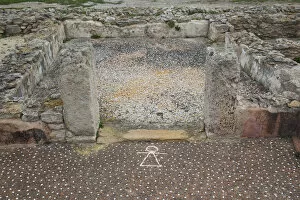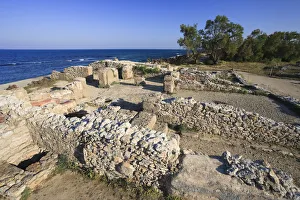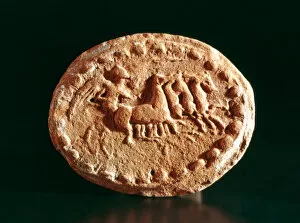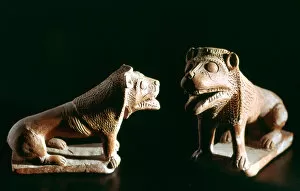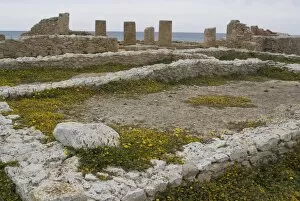Kerkouane Collection
Kerkouane, located in Cap Bon, Tunisia, is a captivating ancient Punic settlement that takes you back to the 5th century BC
All Professionally Made to Order for Quick Shipping
Kerkouane, located in Cap Bon, Tunisia, is a captivating ancient Punic settlement that takes you back to the 5th century BC. These ruins hold the stories of a bygone era and have been recognized as a UNESCO World Heritage site. One of the most remarkable structures within the House of Tanit, dedicated to the Punic goddess of fertility and motherhood. Its intricate design showcases the architectural brilliance of its time. As you explore further into this archaeological wonderland, you'll come across remnants from different periods. The Quadriga monument stands tall, dating back to the 3rd century BC and depicting four horses pulling a chariot – an awe-inspiring sight frozen in time. The heads of dignitaries discovered here provide glimpses into their once influential roles within society. These well-preserved artifacts offer insight into their culture and customs during that period. Money found at Kerkouane reveals details about their economic system – how they traded goods and conducted business transactions centuries ago. It's fascinating to see how currency has evolved over time. Amongst these ruins lie stone lions that guarded entrances or served as symbols of power and protection for this ancient city. Their presence adds an air of majesty to Kerkouane's historical landscape. Dye vats found within Punic houses demonstrate their expertise in textile production during the 5th century BC. These vibrant colors would have adorned clothing worn by residents long ago. The walls surrounding houses in Kerkouane showcase advanced construction techniques employed by its inhabitants centuries ago. They stand as silent witnesses to daily life within this bustling town all those years ago. A bathhouse from that same era offers insights into hygiene practices among Punic people at that time – a testament to their commitment towards cleanliness even amidst challenging circumstances. Visiting this extraordinary site allows us not only to appreciate its beauty but also provides invaluable knowledge about our ancient past.

